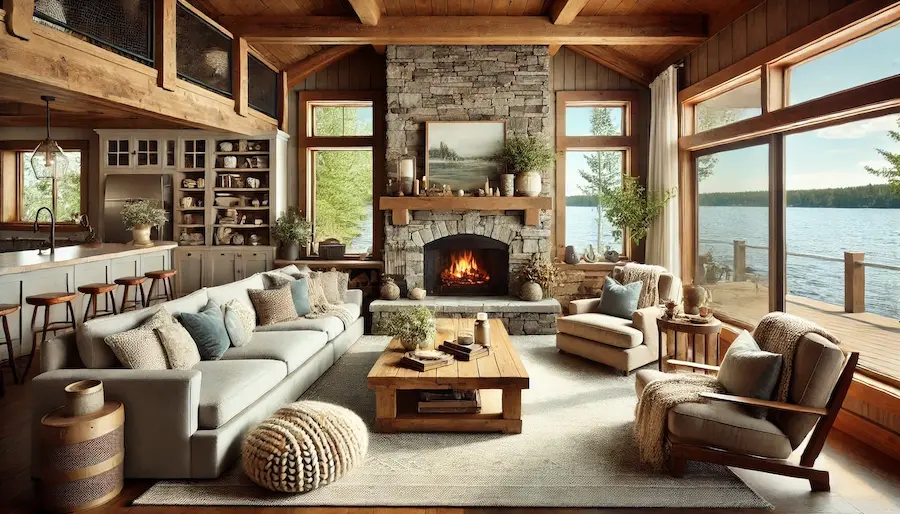Designing a lake house living room involves creating a serene and inviting space that reflects the natural beauty of the surrounding environment. This style emphasizes comfort, natural materials, and a seamless connection between indoor and outdoor living.
History and Origins of Lake House Design
Lake house design draws inspiration from traditional waterfront cottages and cabins, where the primary focus was on relaxation and enjoying nature. Over time, this style has evolved to incorporate modern amenities while maintaining a rustic and cozy aesthetic that complements the lakeside setting.
Key Features of a Lake House Living Room
- Natural Materials: Incorporate elements like wood, stone, and natural fibers to bring the outdoors inside. Exposed wooden beams, stone fireplaces, and wicker furniture are common features that add warmth and texture to the space.
- Neutral Color Palette with Accents: Utilize soft, neutral tones such as whites, beiges, and grays to create a calming atmosphere. Accent colors inspired by the natural surroundings—like blues and greens—can be introduced through textiles and accessories to add visual interest.
- Large Windows: Maximize natural light and showcase lake views with expansive windows. This design choice blurs the line between indoors and outdoors, enhancing the connection to nature.
- Comfortable Seating: Prioritize plush, comfortable furniture to create an inviting space for relaxation and socializing. Sectional sofas, oversized armchairs, and ample throw pillows contribute to a cozy environment.
- Fireplace: A central fireplace adds warmth and serves as a focal point in the living room, enhancing the cozy, rustic charm typical of lake house interiors.
Applications of Lake House Design
- Open Floor Plans: Encourage a sense of spaciousness and facilitate easy movement between the living room, kitchen, and dining areas, fostering a communal atmosphere ideal for gatherings.
- Indoor-Outdoor Living: Incorporate features like sliding glass doors or screened porches to seamlessly connect the living room with outdoor spaces, allowing for an extended living area and easy access to nature.
- Decorative Elements: Use lake-inspired decor such as nautical motifs, vintage oars, or lake-themed artwork to reinforce the setting and add personal character to the space.
Considerations When Designing a Lake House Living Room
- Durability: Select furnishings and materials that can withstand the unique conditions of a lakeside environment, including humidity and increased foot traffic from outdoor activities.
- View Enhancement: Arrange furniture to take full advantage of lake views, ensuring that seating areas are oriented towards windows to maximize enjoyment of the scenery.
- Lighting: In addition to natural light, incorporate layered lighting solutions—such as ambient, task, and accent lighting—to create a versatile and inviting atmosphere during evening hours.
Conclusion
A thoughtfully designed lake house living room combines natural materials, comfortable furnishings, and strategic layouts to create a harmonious space that reflects the tranquility and beauty of its lakeside setting. By focusing on these key elements, you can craft a living area that serves as a perfect retreat for relaxation and connection with nature.
